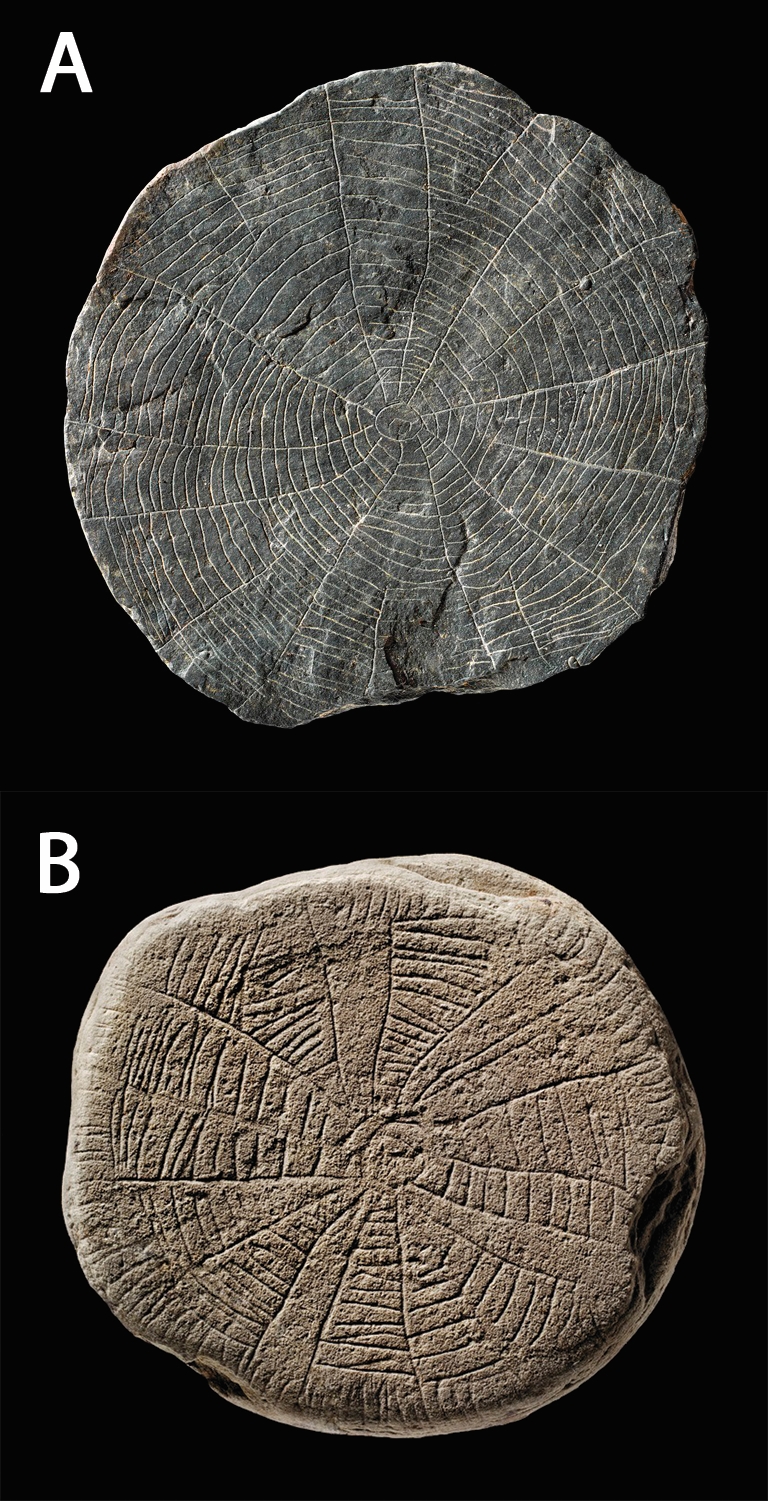A gigantic volcanic eruption some time around the year 2900 BCE may have darkened the sun, leading to freezing temperatures, crop failures, and famine across the northern hemisphere. At roughly the same time, a Neolithic community in Denmark sacrificed hundreds of so-called “sun stones”, possibly in an attempt to restore the natural order and save themselves from ruin.
Between 2013 and 2018, archaeologists excavating the site of Vasagård West on the Danish island of Bornholm discovered a total of 614 flat shale pieces engraved with sun motifs and other images resembling fields and agricultural produce. Strangely, all of these sun stones appear to have been buried in a ditch during a single event some 4,900 years ago, at a time when designs like these were extremely uncommon.
Speaking to IFLScience, Dr Rune Iversen from the University of Copenhagen explained that “we had all these images of sun motifs from the exact same time and that we could relate to a certain event. So that, of course, made us speculate whether that was caused by some kind of natural disaster.”
Stone plaques with sun motifs.
Image credit: John Lee, The National Museum of Denmark
Teaming up with climate scientists from the Niels Bohr Institute, Iversen and his colleagues found that ice cores in both Greenland and Antarctica displayed evidence that large quantities of sulfates were injected into the atmosphere around 2900 BCE. This indicates that a large volcano eruption probably occurred at this time.
“We don’t know where the volcano is located, though it could be around the equator somewhere, because it’s traceable in both Greenland and Antarctica,” said Iversen. Regardless of its location, the explosion was clearly significant, and is estimated to be the 15th most powerful eruption of the last 12,000 years.
“We actually found that this eruption had taken place and that it can be rather narrowly dated, but we wanted a little bit more than that,” continued Iversen. “Because we can say, okay, there’s an eruption, but did it affect Bornholm?”
To find out, the study authors examined sediment layers in a lake in nearby Germany, which indicated a significant drop in sunlight around the time of the eruption. Studying tree rings from both Germany and the US, meanwhile, revealed poor growth around 2900 BCE, along with evidence of spring and summer frosts at this point in history.
An average Danish summer can be pretty harsh in itself, but if you then subtract seven degrees, it’s a really bad summer – so it’s not good for the harvest.
Dr Rune Iversen
Such findings suggest that the eruption darkened the Sun across the entire northern hemisphere, with major implications for the Neolithic residents of Bornholm. While there are no written sources from this period, the researchers are able to get a sense of the devastation by reading ancient Greek and Roman accounts of the so-called “Caesar volcano” (Mount Okmok), which erupted in Alaska in 43 BCE and triggered famine and disease throughout the Mediterranean.
“We are comparing this event to the Caesar volcano because it’s basically of the same magnitude,” explained Iversen. “It has been described in the classical sources with harsh winters and bad summers. They talk about temperatures dropping by about seven degrees in the summer, for example.”
“An average Danish summer can be pretty harsh in itself, but if you then subtract seven degrees, it’s a really bad summer – so it’s not good for the harvest,” he said.
In their paper, the researchers explain that the unique sun stones at Vasagård West may therefore have been deposited as a sacrifice aimed at bringing back the sun and limiting the extent of this natural disaster.
“We see evidence of a community gathering in a joint effort to enact change, engaging in the use of symbolism that was arguably directed toward the banishment of the darkened sun and the restoration of the harvest,” write the study authors.
The study is published in the journal Antiquity.
Source Link: A Volcano Wiped Out Sunlight 5,000 Years Ago, Triggering Strange Sacrifices
